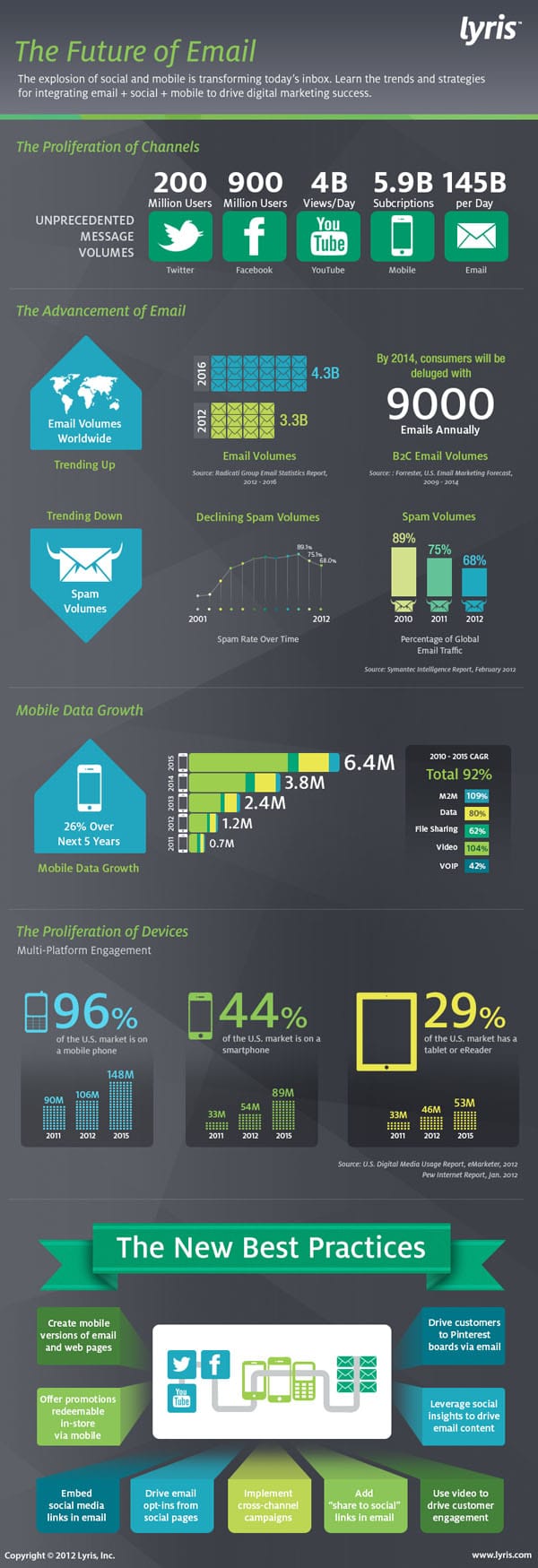Email has had its share of troubles throughout the years, just like any other communication approach run through the Internet. People always find a way to pollute its awesomeness with spam regardless of all the preventive measures added. Email is one of those inventions that was adopted by a lot of people quickly. At one point, you almost couldn’t be on the Internet without having an email address. Today we sign up for accounts on our social networking profiles instead, which for some people somewhat drops the email approach a little. Email spam has lessened over the passed couple of years, and it seems email is once again a great way to communicate. But what is the future of email? What new features will it have to adapt in order to stay current?
With all the mobile devices being introduced into the world, email is in a changing phase right now. New and more powerful applications are being developed in order to make sure we can receive, check and send emails easier and faster than ever before. That is something that has been a big issue since the mobile device was introduced. Why? Because when planning the future of email, we never thought the touchscreen would have had such a significant impact on the speed in which we could type our emails on a mobile device. It crippled it severely, almost to the point where people stopped writing emails on their mobile devices since it always put them so far behind in their schedules.
However, with better optimizations, spell correction and all kinds of new and instant fixes, we have managed to increase our email typing speed on mobile devices. So what now? Where is the future of email headed? By 2014, the average number of emails a person will receive is around 9,000 per year. That’s a lot of emails when you start thinking about it, and answering them all is going to take time, especially if we’re doing it on a mobile device.
In order to facilitate the future of email and to adapt to new technology, there are several optimizations you can adopt that are said to be the best practices. These best practices come from a fresh infographic (presented by Lyris, Inc.) called The Future Of Email. It is a data packed reminder that the future of email looks slightly different than today. Have a peek at it, and see if you are already practicing these things. Maybe you will need to rearrange the way you do things in order to make email the best way to communicate with customers, friends and even family.
Just by looking at the U.S., we quickly see that the mobile market is huge. The fact that 96% of the U.S. market is on a mobile device tells us that email is going to be adopted more and more onto our mobile devices. Personally, I have always had a rough time trying to adopt to email on a mobile device. It’s usually a pain to set up if you have your own server, or it simply won’t connect, depending on where you are. Maybe when the mobile network is more developed and when we have faster mobile transfer speeds, it will be a much more satisfying experience. I guess the future of email will tell.
Lyris – The Future Of Email Prediction Infographic
Via: [visual.ly]

COMMENTS